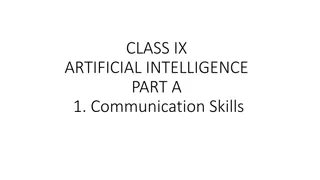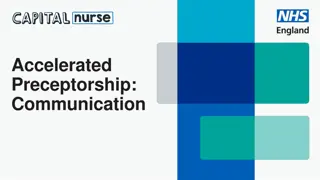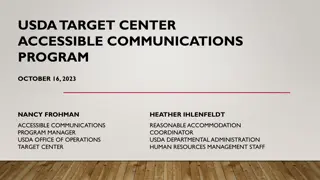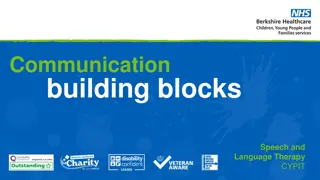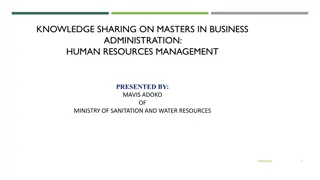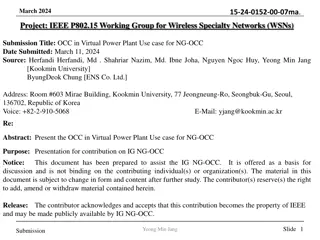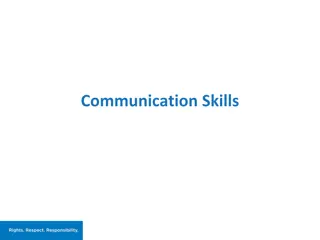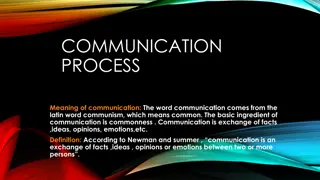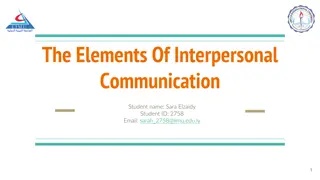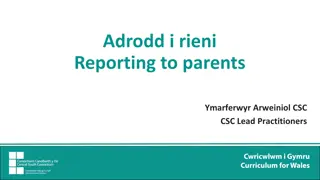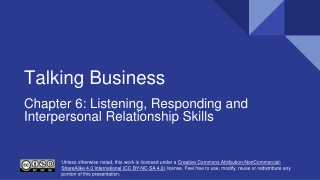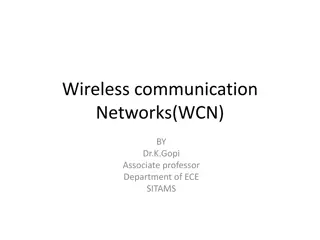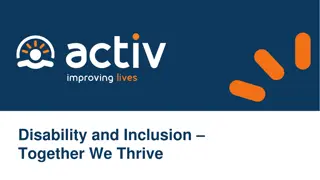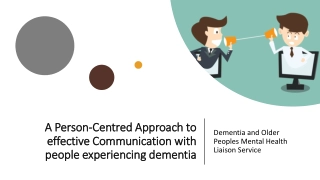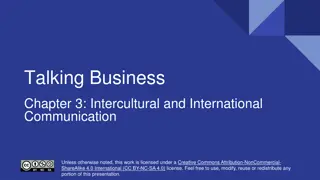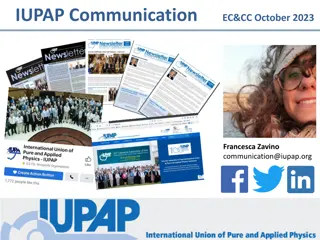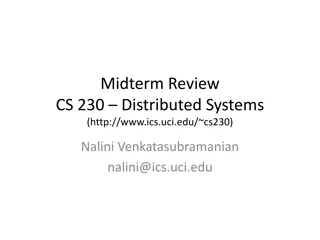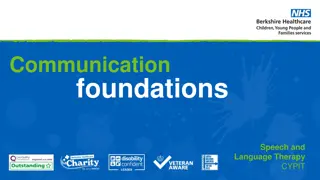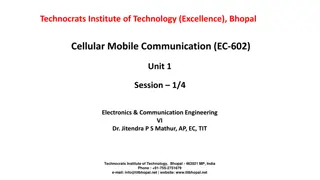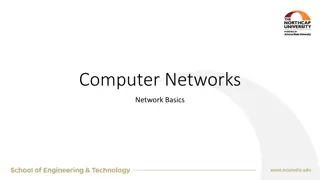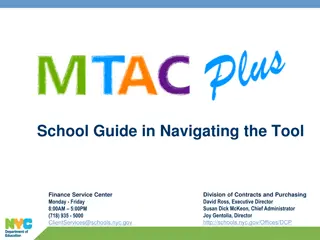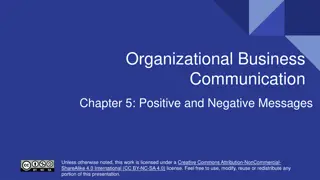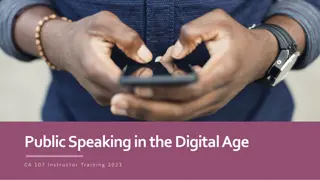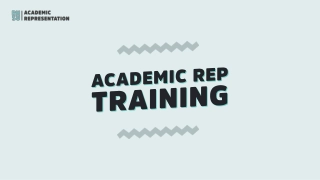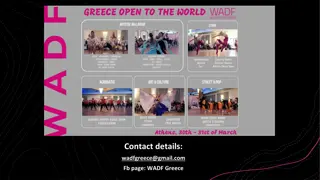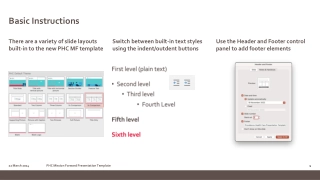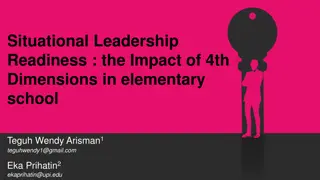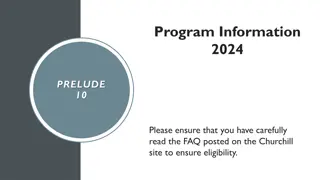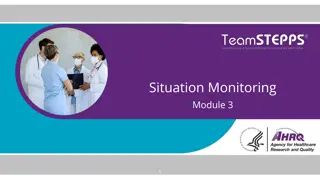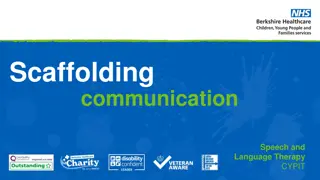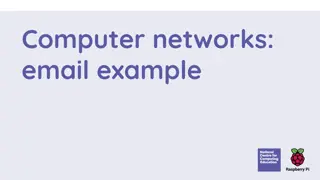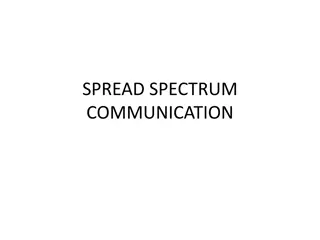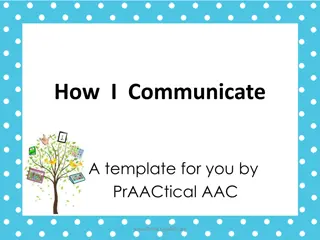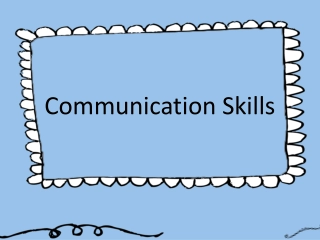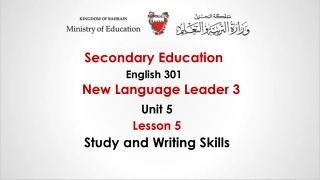Effective Communication: Understanding Styles and Advantages
Communication encompasses various styles including verbal, non-verbal, visual, and written forms. Each style plays a crucial role in conveying information efficiently. Written communication offers advantages like creating a permanent record, meticulous presentation, easy circulation, and suitability for statistical data. Understanding and utilizing different communication styles can enhance overall effectiveness in interpersonal and organizational settings.
Effective Communication: Understanding Styles and Advantages
PowerPoint presentation about 'Effective Communication: Understanding Styles and Advantages'. This presentation describes the topic on Communication encompasses various styles including verbal, non-verbal, visual, and written forms. Each style plays a crucial role in conveying information efficiently. Written communication offers advantages like creating a permanent record, meticulous presentation, easy circulation, and suitability for statistical data. Understanding and utilizing different communication styles can enhance overall effectiveness in interpersonal and organizational settings.. Download this presentation absolutely free.
Presentation Transcript
PART A 1. Communication Skills
1. What is Communication? Information by signs and signals speaking, writing or using some other medium and means is called communication. 2. Communication Cycle (Process) Communication Cycle is the process by which a message is sent by one individual and it passes through a chain of recipients. The timings and effectiveness of a communication cycle is based on how long it takes for feedback to be received by the initial sender Sender: the person or entity originating the communication Message: the information that the sender wishes to convey Encoding: how the sender chooses to bring the message into a form appropriate for sending Channel: the means by which the message is sent Receiver: the person or entity to whom the message is sent Decoding: how the receiver interprets and understands the message Feedback: the receiver's response to the message
Communication styles There are four main categories or communication styles including verbal, non-verbal, written and visual. Verbal Verbal communication is the use of language to transfer information through speaking or sign language. It is one of the most common types, often used during presentations, video conferences and phone calls, meetings and one-on-one conversations. Verbal communication is important because it is efficient. It can be helpful to support verbal communication with both non-verbal and written communication. 2. Non-verbal Nonverbal communication is the use of body language, gestures and facial expressions to convey information to others. It can be used both intentionally and unintentionally. Non-verbal communication is helpful when trying to understand others thoughts and feelings. 3. Visual- Visual communication is the act of using photographs, videos, art, drawings, sketches, charts and graphs to convey information. Visuals are often used as an aid during presentations to provide helpful context alongside written and/or verbal communication. Since people have different learning styles, visual communication might be more helpful for some to consume ideas and information.. 4 . Written Written communication is the act of writing, typing or printing symbols like letters and numbers to convey information. It is helpful because it provides a record of information for reference. Writing is commonly used to share information through books, pamphlets, blogs, letters, memos and more. Emails and chats are a common form of written communication in the workplace.
Advantages of Written Communication: The major advantages of written communication are listed below: 1. A Permanent Record: A written communication helps to maintain a permanent record of the information exchanged or shared. 2. Meticulous Presentation: As a written document is a permanent record, people are very cautious to fulfil all the writing requisites to make the writing perceivable at the other end. Thus, every document curated covers all major information pointers necessary to be communicated. 3. Easy Circulation: A written document can easily be circulated in an organisation, unlike the oral communication medium. Thus, this attribute of written communication comes handy in equipping the masses with the necessary information. 4. Suitable for Statistical Data: Statistical charts and figures are difficult to be interpreted verbally, thus, circulating a document allow people to examine such intrinsic detail with ease. 5. Promotes Goodwill: When conducting business, a well-crafted written document speaks volumes about the competence of a particular organization. Therefore, written communication helps to promote goodwill if performed wisely.
Disadvantages of Written Communication: Disadvantages of Written Communication: The main disadvantages encountered are: 1. Time Consuming: In order to craft an impeccable piece of document, one has to invest an ample amount of time which is indeed difficult in constrained timelines. 2. Non-flexible: A written document cannot be altered once circulated. This makes written communication non- flexible as every written word is concrete and final 3. No Scope for Clarification: If the document is not curated keeping the less informed person s mind-set in check, the details cannot be perceived by such people via the formulated written document. 4. Demands Writing Proficiency: In order to deliver the message adequately across the other end, one should have competencies in the writing sector. 5. Probability of Wrong Interpretation: If there are complex words or difficult sentences included in the writing document, one may interpret a wrong/no meaning out of it. Thus, in order to use written communication, one should make use of easy language.
Non Verbal communication Body language is an aspect of non -verbal communication where physical behaviour is used (as opposed to or in addition to words) to convey information. It s important that our body language synergizes with our words. Body language includes: Facial expressions Posture Gestures touch The use of space Eye movement It s also known as kinesics .
The Dos and Donts of non The Dos and Don ts of non- - verbal messages and body language verbal messages and body language DOs Make eye contact. Have a firm handshake. Check your facial expression. Be natural with your gestures Maintain a receptive posture. Refrain from sending mismatched messages Watch for actions that can be taken for defensiveness. Don't appear disengaged. Don ts Rubbing your hands together during an important meet up Leaning back while meeting with a friend or close colleague. Crossing your arms during an interesting conversation. Not making eye contact. Making too much eye contact. Fidgeting. Touching your face too often.
Advantages of Verbal Communication Skill: Advantages of Verbal Communication Skill: 1. It saves time: The verbal form of communication gives you this facility to quickly send intended message thus saving you time. 2. It saves you money: No requirement of paper or designing a flyer etc 3. Feedback quickness: The distinct advantage of verbal communication is in the fact that the receiver can ask and clarifies his doubt on the spot without any delay. The sender can get quick feedback as to whether his intended message is received in its intended form or not and can clarify the receiver, in the case of any doubt. 4.Most convenient method: Verbal communication is the most widely adopted means of communication globally. People prefer more of verbal communication due to the convenience factor. While communicating verbally, you are more likely to convey matter simply in plain understandable language which is widely preferred 5. Ease of preparation: Oral communication is the easiest way of communication as it does not require preparation of any material.
Disadvantages of Verbal Communication: 1. Chances of distortion of meaning: Due to the presence of various barriers in effective communication, it happens that the intended meaning of the message changes for the intended person which causes a lot of problems in the future. 2. Not convenient for long messages: It is not at all convenient to convey long messages orally as it may happen that by the time message is completed, the receiver may forget the previously spoken important points leading to a chance of ineffective communication. 3. Irrelevant information: While having an important discussion, a lot of irrelevant information can creep in during a conversation leading to a waste of time and gap in the relevant information. This leads to unnecessary time waste and sometimes omitting or forgetting to converse on what is really important. Therefore it is always necessary to keep your communication process clear of any unwanted discussion that may lead to wastage of your precious time and energy. 5. Create a misunderstanding: Usually, when two individuals are having deep conversations, they can have some misunderstandings during the time. Sometimes subtle hints given or some words spoken with some intention get misinterpreted and a whole new different meaning comes out of it. Thus it becomes crucial to know that what you have has a crystal clear meaning with no indirect hints that could make a conversation difficult. 6. Communication cost: Sometimes verbal communication can be really expensive if you need to communicate in a language that you are not familiar with. You will need another person to play the part of translator for you. With advanced technology of hologram, translator may not be required but surely big cost is involved. 7. Conclusion: Verbal communication is the most efficient way of communicating between two personnel or groups. The verbal communication provides you the mean to handle the everyday task with ease and helps in getting a quick result as the feedback is quick and the message conveyed in verbal format is quick and direct to the point. Verbal communication forms a great chunk of our daily communication.
Advantages of non Advantages of non- -verbal communication: verbal communication: 1. Complementary: Non-verbal cues complement a verbal message by adding to its meaning. 2. Easy presentation: Information can be easily presented in non-verbal communication through using visual, audio-visual and silent means of non-verbal communication. 3. Substituting: Non-verbal messages may substitute for the verbal message especially if it is blocked by noise, interruption, long-distance, language barrier etc. for example; gestures-finger to lips to indicate need for quiet, facial expressions- a nod instead of a yes. 4. Reducing wastage of time: The message of non-verbal communication reached the receiver very fast. For this reason, Non-verbal cues of communication like sign and symbol can also communicate some messages very quickly than written or oral messages.
Disadvantages or limitations of non Disadvantages or limitations of non- -verbal communication: communication: 1. Vague and imprecise: Non-verbal communication is quite vague and imprecise. Since in this communication, there is no use of words or language which expresses clear meaning to the receiver. No dictionary can accurately classify them. Their meaning varies not only by culture and context but by the degree of intention. 2. Continuous: It is possible to stop talking in verbal communication, but it is generally not possible to stop non-verbal cues. 3. Multi-channel: while watching someone s eyes, you may miss something significant in a hand gesture. Everything is happening at once and therefore it may be confusing to keep up with everything. 4. Culture bound: Non-verbal communication is learned in childhood, passed on to you by your parents and others with whom you associate. A few other gestures seem to be universal. Evidence suggests that humans of all cultures smile when happy and frown when unhappy. However, most non-verbal symbols seem to be even further disconnected from any essentialmeaning than verbal symbols. Gestures seen as positive in one culture (Like the thumbs-up gesture in the USA) may be seen as obscene in another culture. 5. Long conversations are not possible: In non-verbal communication, long conversation and necessary explanations are not possible. verbal
Perspectives in Communication Perspective focuses on the way in which our shared meanings and practices are constituted through language and symbol, the construction of messages, and their dissemination through media, organizations, and society. Factors affecting perspectives in communication 1. Visual perception: Visual perception is the ability to see and interpret (analyse and give meaning to) the visual information that surrounds us. 2. Language -The different perspectives we experience can be with language as well. 3. Past Experiences 4. Prejudices :Prejudices occur when we take an isolated experience with one type of person and then act as if all encounters in the future with people of the same type or with the same characteristics will result in the same experience 5. Feelings : There are actually two ways in which your feelings can influence your communication with another person. The first simply refers to the way that you feel on a given day; if you feel well, you ll communicate in one way and if you feel ill you ll communicate in another way. The second aspect related to feelings refers to how you feel about a specific person 6. Environment : The last area of influence on communication is your environment. All of us communicate differently in different environments.. Do you speak to our teachers the same way that you do to your friends? Do you talk to strangers with more or less formality than people you know well?
Basic Writing Skills Basic Writing Skills Writing is a form of communication that allows students to put their feelings and ideas on paper, to organize their knowledge and beliefs into convincing arguments, and to convey meaning through well-constructed text. Kinds of sentences :(according to their purpose) A set of words that is complete in itself, typically containing a subject and predicate, conveying a statement, question, exclamation, or command, and consisting of a main clause and sometimes one or more subordinate clauses.
Active and passive sentences: Sentences where the subject does an action are known to be in the Active voice. Sentences in which the subject receives an action are known to be in the Passive voice.
2. Parts of a sentence: Almost all English sentences have a subject and a verb. Some also have an object. A subject is the person or thing that does an action. A verb describes the action. Object is the person or thing that receives the action. For example, Divya reads a book .
3. Parts of Speech: A sentence is a group of words that communicates a complete thought (Example: Raju goes to school). A group of words, which does not make complete sense, is known as a phrase (Example: Raju goes). A sentence always begins with a capital letter, and it always ends with a question mark, full stop or exclamation mark. Using capitals: Punctuation It is a set of marks, such as the full stop and the comma, which help us separate parts of a sentence and explain its meaning. Full stop, comma, Exclamation mark, Question marks, Apostrophe.
Basic parts of speech: There are eight basic parts of speech in the English language. These are noun, pronoun, verb, adjective, adverb, preposition, conjunction and interjection. The part of speech indicates how the word functions in meaning as well as grammatically within the sentence.
A noun is a word for a person, place, thing, or idea. Nouns are often used with an article (the, a, an), but not always. A pronoun is a word used in place of a noun. A verb expresses action or being. An adjective modifies or describes a noun or pronoun. An adverb modifies or describes a verb, an adjective, or another adverb. A preposition is a word placed before a noun or pronoun to form a phrase modifying another word in the sentence. A conjunction joins words, phrases, or clauses. An interjection is a word used to express emotion. You should be able to use these parts of the speech in making sentences.
4. Paragraphs 4. Paragraphs A group of sentences forms a paragraph. While writing a paragraph, make sure the sentences have a common idea. When you want to write about a different idea, make a new paragraph. For example, if you are writing about your school, the first paragraph can be of sentences about the name, location, size and other such details. In the next paragraph you can use sentences to describe what you like about your school.


